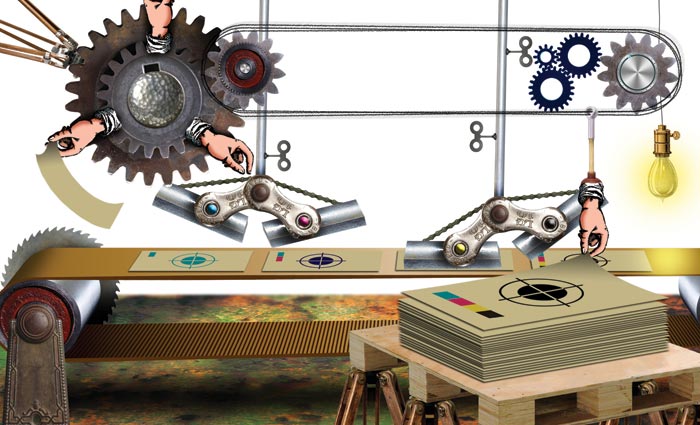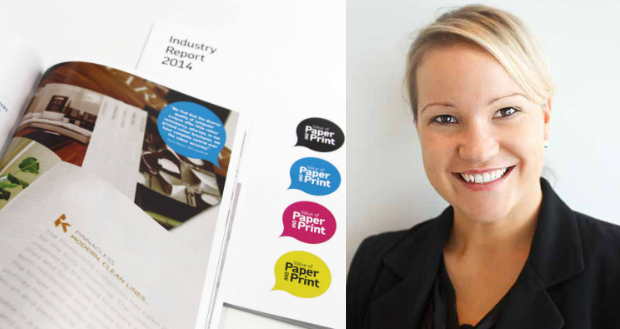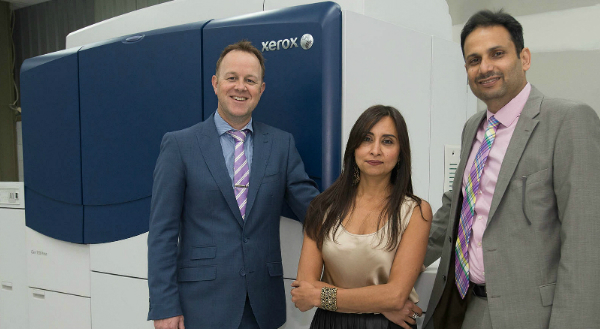
Businesses can blame inroads made by digital, or the GFC, or the structural shakeout in sheetfed, or the occasionally irresponsible temptations of vendors, but often the true culprit of ‘overcapacity’ syndrome is right there in the mirror.
Pundits have lamented that some operators have it exactly backwards. They have invested heavily in heavy metal, with little foresight as to their projected turnover, and are busy chasing jobs to pay off the kit. It’s a downward spiral.
To bring jobs in the door, companies are forced to offer ridiculous pricing. As Andy Vels Jensen, managing director of Heidelberg Australia and New Zealand, has said, print sales reps are quoting “without knowing their cost to produce and not having the technology or ability to achieve anything near ‘lowest cost to manufacture’.”
Wiser heads are swapping – not adding – to their arsenal. The trend is to replace ageing presses with more productive single machines. In other cases, the are outsourcing rather than upgrading, which plays into the hands of trade suppliers.
Across the sheetfed market, press fleets are being downsized and replaced with fewer, savvier presses. As part of its eastern seaboard consolidation, Geon switched to state-of-the-art Heidelberg Speedmaster XL 105s. Bambra Press replaced two late-model Speedmasters with one new 12-colour XL 75. Over the past decade, the Melbourne company has reduced its fleet of seven presses to this single, highly automated long perfector.
When shopping for heavy metal, printers are increasingly after smart presses that allow ‘lowest-cost-to-manufacture’ or for kit that can offer added-value extras inline.
To coincide with its new facility at Geebung, Brisbane last year, CMYKhub invested in a Ryobi UV A1 five-colour plus coater combination to offer spot-UV without the costs normally associated with UV coating.
CMYKhub founder Clive Denholm says the decision to go UV was to create new products such as Crystal Varnish and enable same-day drying on uncoated paper, regardless of ink coverage. The Ryobi press “has improved turnaround times on uncoated paper and given us a new range of products with uniqueness in the marketplace. This has allowed our customer base to regain some margin.”
The company has experienced steady growth, he says. “More print companies are choosing to outsource work rather than replace equipment. Some are adding digital but we’ve found that on quantities of over 250, offset still provides a lower manufacturing cost, so volumes are still growing. Our national footprint helps, as it enables our customers to sell and deliver printing Australia wide.”
Capacity equation
So do printers in Australia need to increase, maintain or reduce capacity in a sheetfed market that shrunk by some 25% during the GFC?
“That would depend on the circumstances of the printer,” says Denholm. “The average small to medium-sized printer needs to ensure that if they manufacture themselves, the total cost of producing the printed product is lower than what they can purchase outside. The issue is complicated by a couple of factors.”
The first is utilisation, he says. “If you don’t have enough work to run the press 60 hours per week, your cost for one hour’s production changes greatly.”
The second is choosing correct equipment. “If you want to manufacture A1 posters, you need an A1 press, but if you want to produce a ‘with compliments’ slip, maybe an A3 press or digital machine is a better option, so you end up needing a range of equipment. The key is you need to separate the functions of sales and manufacturing – and whatever you do needs to be best practice.”
How are printers crunching the numbers? Is there a simple equation to work out whether there is enough work to justify an investment?
“It’s more complex than that,” says Denholm. “If you want to compare A4 leaflets produced on digital or offset, an offset press has a high cost for the first sheet, it could be $100 to $300, depending on the press size and paper type, but the cost per impression after that first sheet could be less than one cent. When you look at digital and factor in the capital costs, my view is it costs around 16-17 cents for A4. We will be adding digital to our hubs in the future but we can’t get the numbers to work over what we consider to be very short runs.”
Melbourne commercial printer PMS Lithography recently turned to Ryobi reseller Cyber to invest in an A1 Ryobi 925 A1 press, with four colours plus inline aqueous UV coater. It has replaced a Ryobi 725, leaving only the 925 and a five-colour Roland 800.
PMS Litho owner Theo Prosenica says the impetus for the inline coater was heightened efficiency. “We could print four-colour process, put a coating on it and the job would be ready to be turned over immediately for back-up. Every 10 minutes, if you’re doing multiple makereadies every day, it adds up to a significant saving over a year.”
Overtime has been cut by around 40-50%, so any additional funding requirements for the capital costs in the lease payments was more than covered by the reduction in overtime payments, he argues. The 725 ran on three shifts, the new 925 runs on two.
The 925 has enabled a greater magazine component at PMS Litho, whose staple is package printing. It has increased the pressroom’s capacity, with 16-page work, printed eight-over-eight replacing four-over-four. “It’s reduced our overtime payments and labour costs and increased our productivity,” says Prosenica.
There has been a significant reduction in the company’s casual pay bill, which ran at $60,000 to $80,000 a year. And, what’s more, he says permanent staff tend to take greater care with the kit. All in all, Prosenica has been able to pare almost 30 hours off a formerly 280-hour month. “While I’m still paying the same wages, I’ve got some 20-30 hours of extra productivity I can fill.”
Gold Coast trade printer IBS in Nerang recently added a second KBA Genius 52 UV waterless offset press, supplied by Jet Technologies. Quick drying UV-cured inks eliminate dead time caused by waiting for inks to settle before trimming, says general manager Michael Culverwell. “This has drastically reduced our turnaround times and enabled us to offer a reliable next-day dispatch service.”
The company’s owner, Scott Siganto, says IBS used to outsource to adjacent A1 house FastProof Press, where two Lithrones, a 12- and five-colour, processed its orders, but it has scaled back to its own B3 UV platform in a revised business strategy.
The smaller UV waterless presses have opened markets for vinyl stickers, polypropylene stocks and chrome foil. Printing on these had not been possible with traditional offset. “We had one machine running across two shifts and now we have two machines running across two-and-a-half shifts.”
When it comes to the question of ‘should I or shouldn’t I invest’, Culverwell says: “While you can invest all the capital you have available in new machines, if you don’t have the workflow to support them or new print orders to keep them busy, you’re just burning your money.”
IBS instead invested in streamlining its office administration, customer ordering and pre-press workflows into one fully integrated and semi-automated system – with a major impact on orders.
The company has gone a stage further, integrating that workflow into EditandPrint, a web-to-print system designed for print resellers who want to stay competitive at the retail end in this era of VistaPrint. Culverwell says: “Resellers can have a state-of-the-art, end-to-end web presence for a low monthly fee. The sites can all be uniquely skinned and products can be added or taken away, depending on what you would like to offer the public. The retail customer can upload, design online or request artwork options.”
Siganto says IBS is small enough to be innovative, unlike the multi-state behemoths, where much has been ploughed into heavy metal and much of the effort is in keeping the work rolling over to pay down the overheads, never mind the margin.
Make your presses earn their keep
How many and what type of presses make the optimal choice for your production floor? The European Union is so concerned about overcapacity, it has begun a dialogue with web and gravure houses on that issue – and the feared word ‘regulation’ has crept into the conversation.
Meanwhile on the sheetfed side, Heidelberg appears to be leading the vendor community by helping printers analyse their press performance. The process, part of Prinect, involves a server at Heidelberg headquarters in Germany that analyses data from late-model Heidelbergs.
Soeren Lange, Heidelberg’s local product manager of Prinect & CTP, says Prinect Performance Benchmarking will soon launch in Australia. It enables local printers to use a simple browser interface to log on and see how their equipment is performing against peer user groups in Australia or elsewhere.
Manroland Australia managing director Steve Dunwell says that with demand for sheetfed in decline, commercial printers must ensure they are operating at maximum efficiency and that usually can only be achieved with modern presses. “There is a lot of quite old equipment in the field in ANZ and commercial printers in particular should be reviewing their press fleet with a view to replacing two or even three presses with one, modern, super-efficient press.”
Replacing two presses with one more efficient machine affects the wage bill. “It is not a reduction in the labour rate, it is an increase in the labour efficiency,” says Dunwell.
How a press pays for itself depends on several factors, he adds: “There is no ‘typical’ offset press. An entry level A1 four-colour sheetfed press is likely to price around $1 million. Any finance company can provide you with a rate per $1,000 borrowed over X number of years.”
Gerard Wintle, general manager of print at Ferrostaal Australia, which represents Komori, believes investment decisions should be made on age of the existing press, niche market requirements, a new type of print work to be targeted, anticipated volume, efficiency gains from newer technology, and cost of operator training and maintenance.
Any consideration for value-adds, such as Komori’s H-UV inline technology, should be based on high utilisation and not something which “might be handy“, says Wintle, as the cost of these value-adds are factored into every job, not just the jobs when used. The same applies to coater units, UV or aqueous, and inline finishing.
Presses need to earn their keep from day one. Wintle’s rule of thumb is that for every $1 million, it will cost around $17,000 per month to fund, and even this can vary dramatically, depending on interest rates, length of term and the balloon payment.
Wintle says saturation capacity on presses is not always a plus, as it ties print businesses to a fixed clientele and limits the dynamic expansion a progressive sales force might be developing through new leads.
“Utilisation is the key. If presses are running 24/7 with no capacity for new work, then new clients cannot be accommodated. Sometimes a reduction in capacity is needed to suit sales,” he says.
Comment below to have your say on this story.
If you have a news story or tip-off, get in touch at editorial@sprinter.com.au.
Sign up to the Sprinter newsletter


